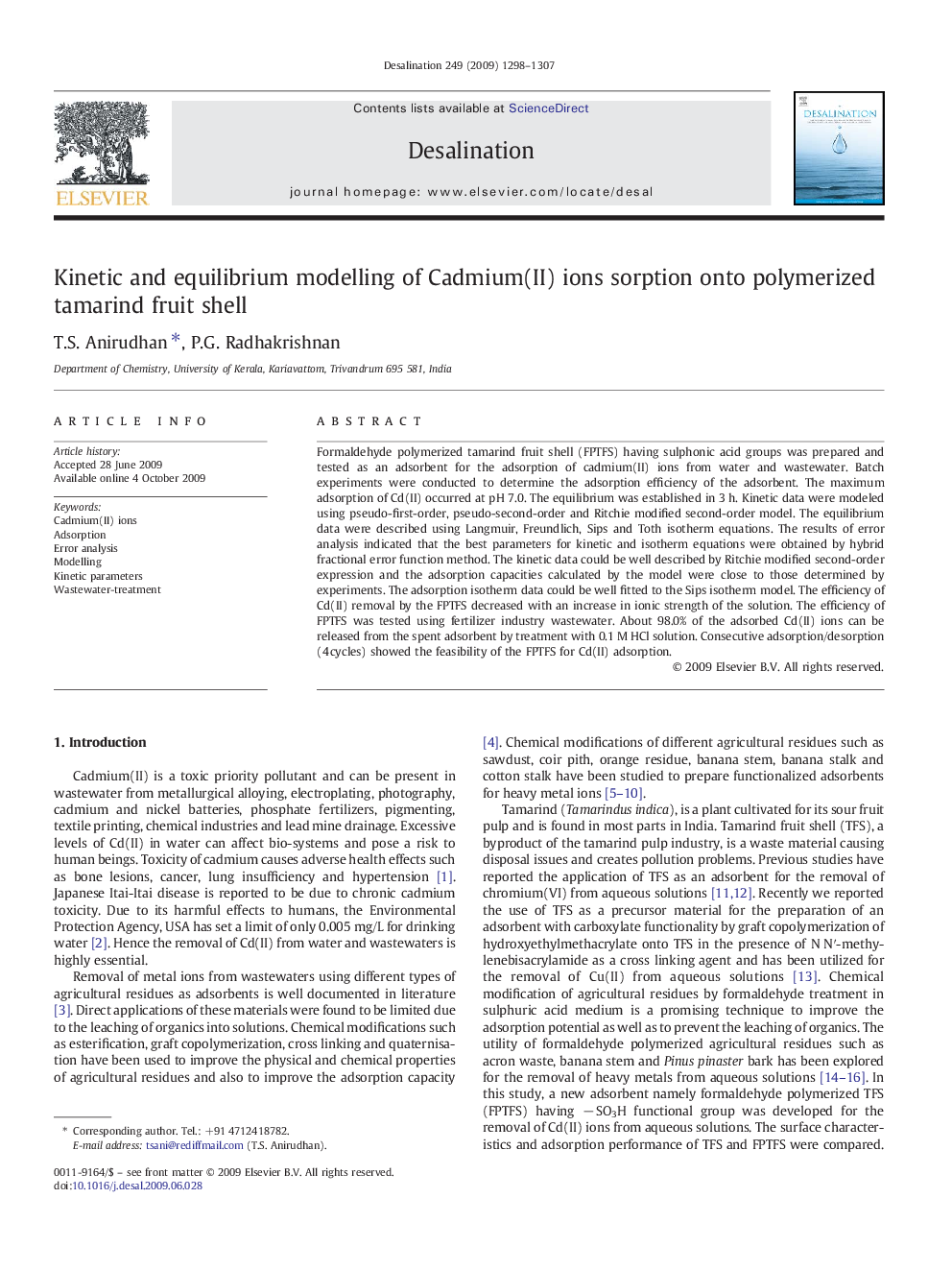| Article ID | Journal | Published Year | Pages | File Type |
|---|---|---|---|---|
| 626239 | Desalination | 2009 | 10 Pages |
Abstract
Formaldehyde polymerized tamarind fruit shell (FPTFS) having sulphonic acid groups was prepared and tested as an adsorbent for the adsorption of cadmium(II) ions from water and wastewater. Batch experiments were conducted to determine the adsorption efficiency of the adsorbent. The maximum adsorption of Cd(II) occurred at pH 7.0. The equilibrium was established in 3Â h. Kinetic data were modeled using pseudo-first-order, pseudo-second-order and Ritchie modified second-order model. The equilibrium data were described using Langmuir, Freundlich, Sips and Toth isotherm equations. The results of error analysis indicated that the best parameters for kinetic and isotherm equations were obtained by hybrid fractional error function method. The kinetic data could be well described by Ritchie modified second-order expression and the adsorption capacities calculated by the model were close to those determined by experiments. The adsorption isotherm data could be well fitted to the Sips isotherm model. The efficiency of Cd(II) removal by the FPTFS decreased with an increase in ionic strength of the solution. The efficiency of FPTFS was tested using fertilizer industry wastewater. About 98.0% of the adsorbed Cd(II) ions can be released from the spent adsorbent by treatment with 0.1Â M HCl solution. Consecutive adsorption/desorption (4Â cycles) showed the feasibility of the FPTFS for Cd(II) adsorption.
Related Topics
Physical Sciences and Engineering
Chemical Engineering
Filtration and Separation
Authors
T.S. Anirudhan, P.G. Radhakrishnan,
